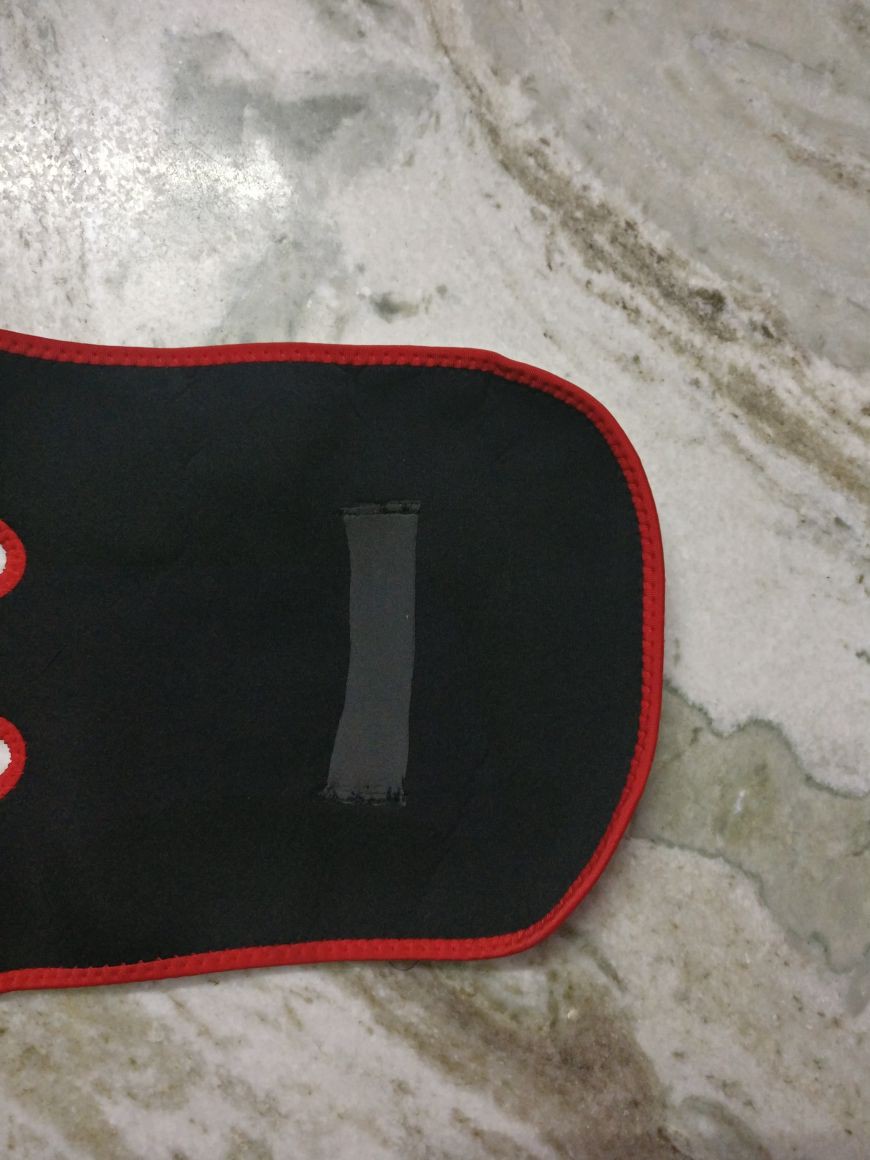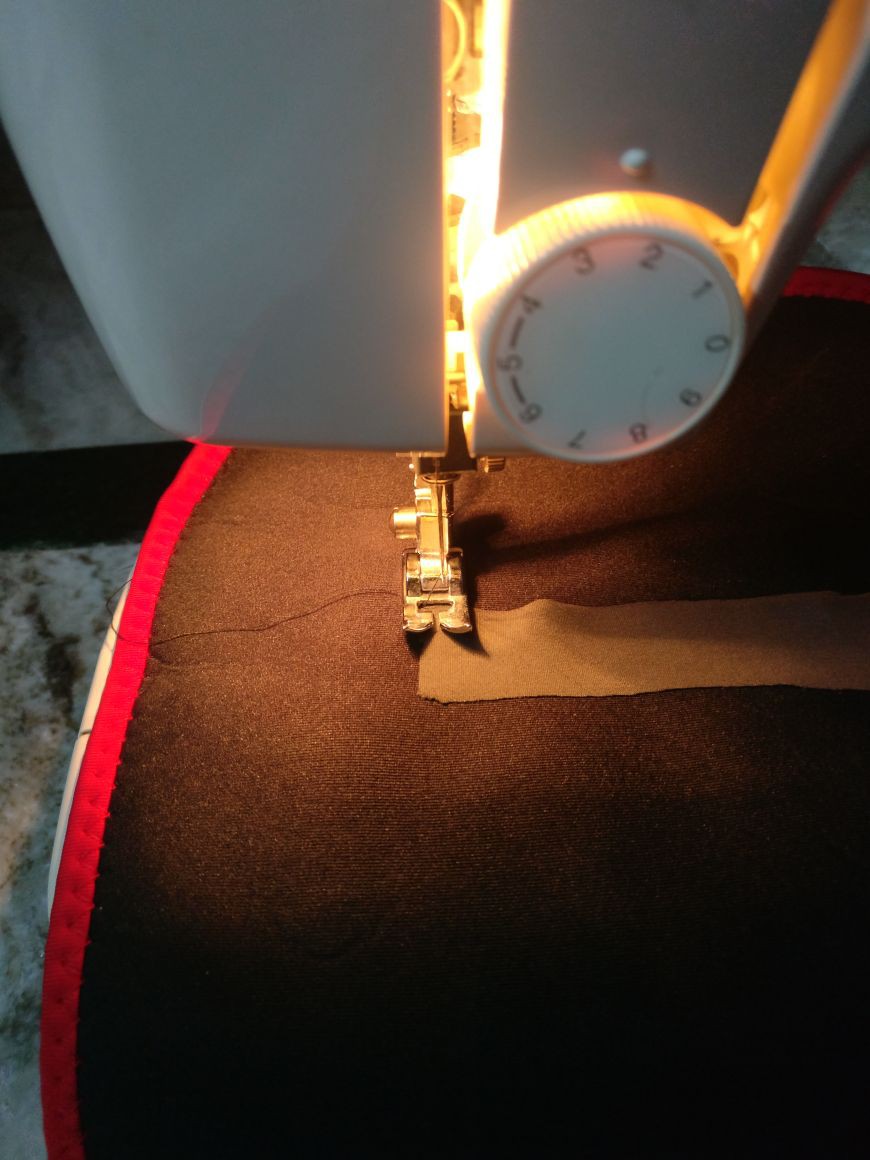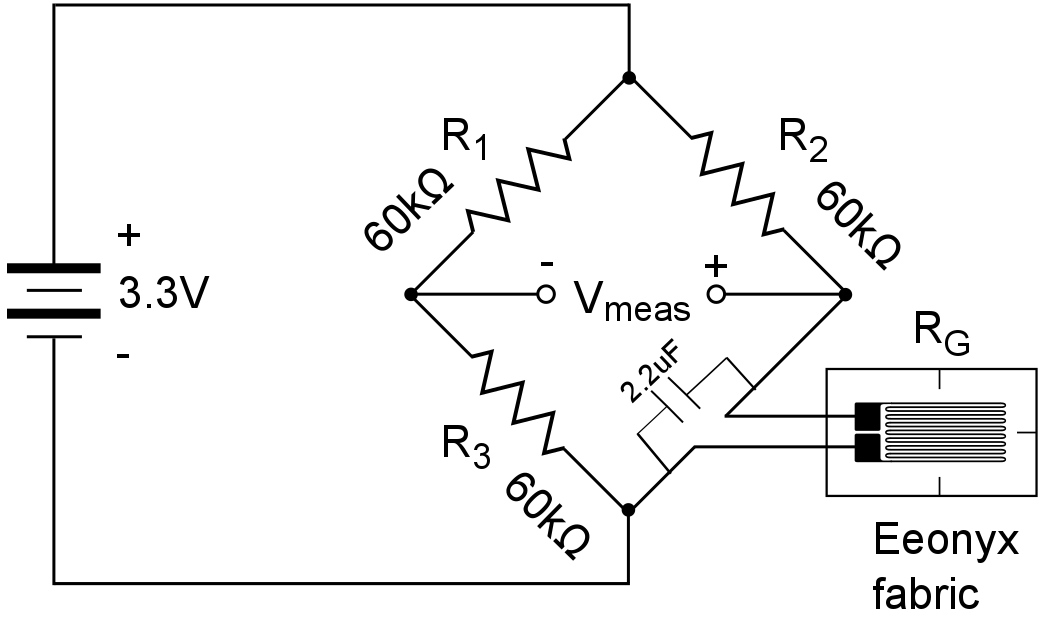Measuring human movements is important before rehabilitation, training or exercises can start. The knee was simply modeled as a hinge joint, and the flexion-extension angle was defined as the angle between the two consecutive joint segments. Existing methods include use of IR emmitter and motion capture cameras, pair of IMU's, electrogoniometers. They are quite expensive and implementation wise the dual IMU method would require wiring which could hinder gait. Our solution was to measure the joint angle using a piezoresisitive fabric sensor.  (Fig: Flexion extension angle.)
(Fig: Flexion extension angle.)
A textile strain sensor was used on the wearable gesture sensing device to determine the resistance in response to the strain. The textile strain sensor consisted of the elastic piezoresistive fabric, two electrodes, two conductive textile wires. Based on the relationship between the flexion angle and the resistance of the elastic sensor in the flexion-recovery cycles, the relationship between the flexion angle and the resistance of the textile strain sensor during the stretching and recovering movements can thus be obtained.
The sensor is based off the Eeonyx SLPA 20kohm fabric cut to a 6cm length. It is then placed in the inside portion of a neoprene knee brace and put to stitch.

(Fig: Positioning the fabric sensor in the knee brace)
 (Fig: Stitching the sensor to the knee brace)
(Fig: Stitching the sensor to the knee brace)
The sensor changes it's resistance as it expands or contracts. A wheatstone bridge network used to measure it accurately and 2.2uF capictor smooths it out.
I quickly wrote up an analogRead code on the DFrobot curie to plot the values and lo and behold.

(Fig: Raw sensor output while doing squats)
Now to do the goniometer functionality, I needed to whip out my protractor to map the angle of the knee joint to to the analog values from the bridge network. This simple method results in the measurement of the joint angle accurately.
 Vignesh Ravichandran
Vignesh Ravichandran
Discussions
Become a Hackaday.io Member
Create an account to leave a comment. Already have an account? Log In.